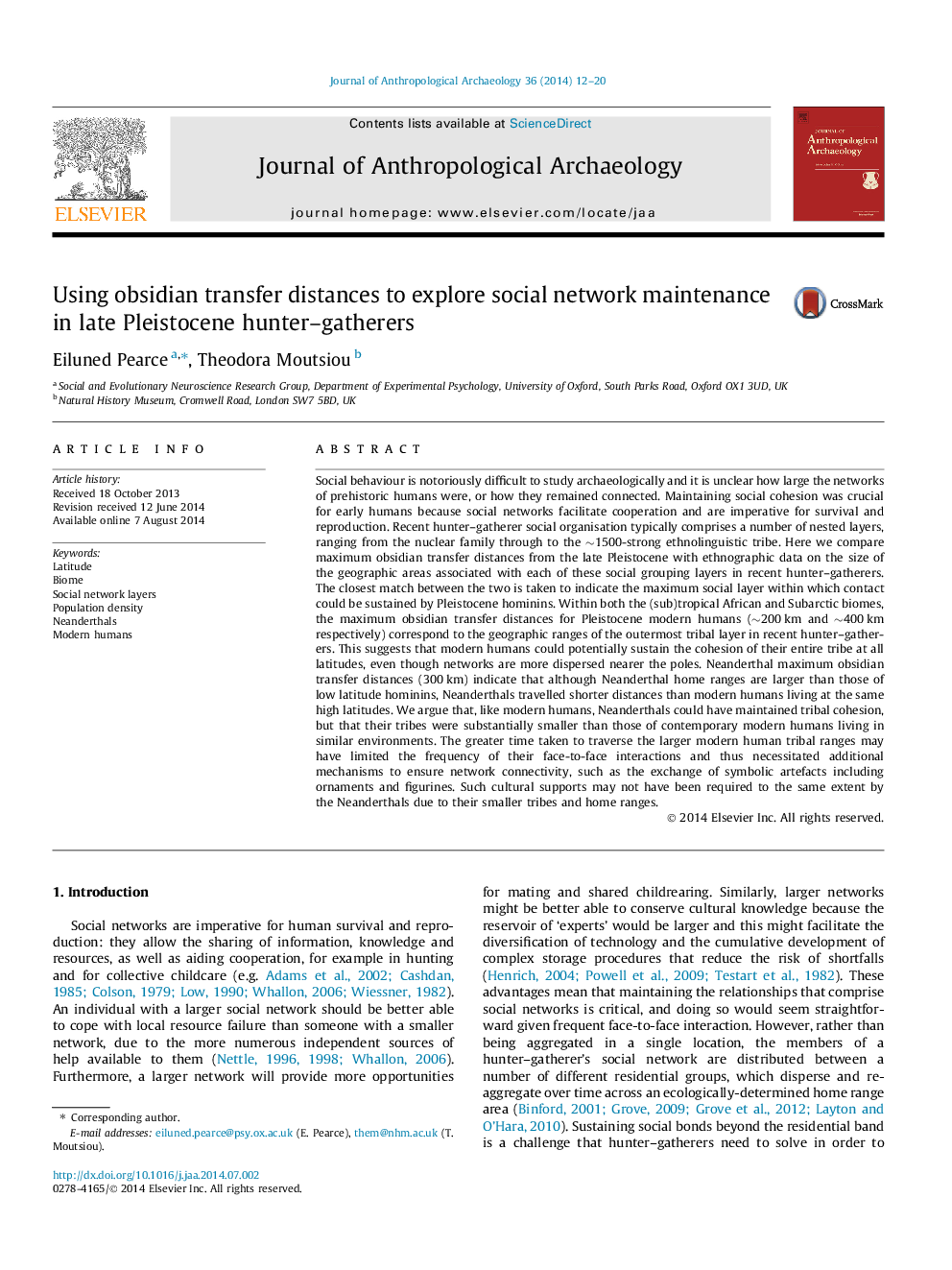| کد مقاله | کد نشریه | سال انتشار | مقاله انگلیسی | نسخه تمام متن |
|---|---|---|---|---|
| 1034927 | 1483854 | 2014 | 9 صفحه PDF | دانلود رایگان |
• Modern humans could have maintained tribal connectivity (i.e. all network layers) at all latitudes.
• Neanderthals were potentially able to sustain contact across their tribal ranges.
• Modern humans seem to have had larger tribes than Neanderthals.
• Larger tribal ranges may have necessitated additional bonding mechanisms in modern humans.
Social behaviour is notoriously difficult to study archaeologically and it is unclear how large the networks of prehistoric humans were, or how they remained connected. Maintaining social cohesion was crucial for early humans because social networks facilitate cooperation and are imperative for survival and reproduction. Recent hunter–gatherer social organisation typically comprises a number of nested layers, ranging from the nuclear family through to the ∼1500-strong ethnolinguistic tribe. Here we compare maximum obsidian transfer distances from the late Pleistocene with ethnographic data on the size of the geographic areas associated with each of these social grouping layers in recent hunter–gatherers. The closest match between the two is taken to indicate the maximum social layer within which contact could be sustained by Pleistocene hominins. Within both the (sub)tropical African and Subarctic biomes, the maximum obsidian transfer distances for Pleistocene modern humans (∼200 km and ∼400 km respectively) correspond to the geographic ranges of the outermost tribal layer in recent hunter–gatherers. This suggests that modern humans could potentially sustain the cohesion of their entire tribe at all latitudes, even though networks are more dispersed nearer the poles. Neanderthal maximum obsidian transfer distances (300 km) indicate that although Neanderthal home ranges are larger than those of low latitude hominins, Neanderthals travelled shorter distances than modern humans living at the same high latitudes. We argue that, like modern humans, Neanderthals could have maintained tribal cohesion, but that their tribes were substantially smaller than those of contemporary modern humans living in similar environments. The greater time taken to traverse the larger modern human tribal ranges may have limited the frequency of their face-to-face interactions and thus necessitated additional mechanisms to ensure network connectivity, such as the exchange of symbolic artefacts including ornaments and figurines. Such cultural supports may not have been required to the same extent by the Neanderthals due to their smaller tribes and home ranges.
Journal: Journal of Anthropological Archaeology - Volume 36, December 2014, Pages 12–20
